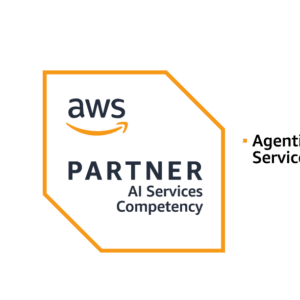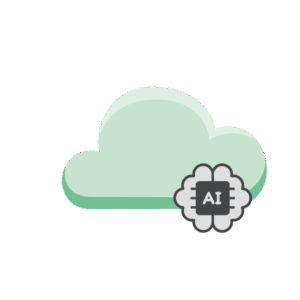
Did you know that Amazon Web Services (AWS) is the leading cloud computing platform, serving millions of customers worldwide?
With its vast range of AWS services, Amazon has transformed the way businesses operate, offering scalable solutions that enhance productivity, efficiency, and security. As more companies migrate to the AWS cloud, understanding the diverse offerings becomes crucial for maximizing the benefits and staying competitive in today’s digital landscape.
In this comprehensive article, we will delve into the key AWS services, focusing on the powerhouses of EC2, S3, and RDS. We will explore their features, advantages, and best practices, providing you with the knowledge you need to harness the full potential of AWS in your business.
Key Takeaways:
- AWS is the leading cloud computing platform, offering a wide range of services to millions of customers.
- Understanding the key AWS services, such as EC2, S3, and RDS, is crucial for maximizing the benefits of cloud computing.
- EC2 allows for the creation and management of virtual servers in the cloud, offering scalability and flexibility.
- S3 provides highly scalable and secure object storage, making it ideal for data backup and management.
- RDS simplifies the setup, operation, and scaling of relational databases, supporting multiple database engines.
Amazon EC2: Empowering Virtual Servers in the Cloud
Amazon Elastic Compute Cloud (EC2) is a powerful web service that offers scalable computing capacity in the cloud. It allows you to design and manage virtual servers, known as instances, according to your specific needs. EC2 stands out for its adaptability and scalability, making it suitable for a wide range of applications, from hosting websites to running complex software solutions.
With EC2, you have access to a variety of instance types optimized for different workloads. Whether you need high-performance computing, memory-intensive applications, or cost-efficient options, EC2 has you covered. You can choose from general-purpose instances, memory-optimized instances, storage-optimized instances, and more.
Advantages of Amazon EC2
- Scalability: EC2 allows you to scale your computing resources up or down based on demand. This flexibility ensures that you only pay for what you use, saving you money on unnecessary infrastructure.
- Ease of Use: Getting started with EC2 is straightforward, and the user-friendly AWS Management Console provides a convenient interface for managing your instances.
- Reliability: EC2 offers high availability and ensures that your applications are up and running without interruption. It also provides built-in redundancy and fault tolerance.
- Security: EC2 incorporates industry-standard security measures to protect your data and applications. You have control over network security, access permissions, and encryption options.
- Flexible Pricing: EC2 offers various pricing models, including on-demand instances, reserved instances, and spot instances. This pricing flexibility allows you to optimize costs based on your usage patterns and requirements.
Whether you’re a small startup or a large enterprise, EC2 provides the infrastructure you need to power your applications in the cloud. With extensive EC2 documentation available from AWS, you’ll find all the resources necessary to get the most out of this powerful service.
For those looking to dive deeper into successful migration strategies to AWS, leveraging EC2 and other services, we recommend exploring our insights on Strategies and Tools for a Successful Migration to AWS.
Amazon S3: A Haven for Cloud Storage
Amazon Simple Storage Service (S3) is a highly scalable object storage service designed for storing and accessing large data repositories. It is widely used for data backup and storage due to its reputation for resilience and availability.
S3 offers a variety of features that make it a versatile and powerful storage solution. These features include:
- Cross-region replication: Allows you to automatically replicate data across different AWS regions, ensuring redundancy and minimizing the risk of data loss.
- Lifecycle policies: Enable you to manage the lifecycle of your objects by defining rules for transitioning data between storage classes or deleting data based on specified criteria.
- Data versioning: Provides the ability to keep multiple versions of an object, allowing you to restore previous versions if needed.
One aspect to consider when working with S3 is the data consistency models. S3 provides strong read-after-write consistency for new object uploads and eventual consistency for overwrite PUTS and DELETE requests. Understanding these models is important to ensure the accuracy and integrity of your data.
To safeguard your data, S3 implements robust security measures. Encryption mechanisms, such as server-side encryption and client-side encryption, can be used to protect your data at rest. Access control lists (ACLs) and bucket policies allow you to control access to your data and manage permissions.
Uploading and managing data in S3 is made easy through the AWS Management Console and APIs. You can organize your data into buckets and folders, making it simple to navigate and retrieve specific objects when needed.
Overall, Amazon S3 offers a comprehensive set of features, strong data consistency models, and robust security measures that make it an ideal choice for cloud storage and data management. Its scalability and reliability make it a haven for businesses looking to securely store and access their valuable data.
Amazon RDS: Simplifying Relational Databases
Amazon Relational Database Service (RDS) is a managed service that simplifies the setup, operation, and scaling of relational databases in the cloud. It supports a variety of database engines, including MySQL, PostgreSQL, Oracle, and Microsoft SQL Server.
RDS offers several advantages for database management:
- Automated Backups: RDS provides automated backups, ensuring the durability of your data. These backups allow for point-in-time recovery, giving you greater flexibility in case of accidental data loss or corruption.
- High Availability: RDS offers high availability mechanisms that minimize downtime and ensure data accessibility. It uses multiple Availability Zones for redundancy, providing excellent service reliability.
- Seamless Scalability: With RDS, you can easily scale your database instance vertically or horizontally to accommodate changing workloads. Vertical scaling involves upgrading the instance types to increase performance, while horizontal scaling is achieved by deploying Read Replicas to handle read-heavy workloads.
- Customizable Configurations: Managing and creating RDS instances is straightforward, with options to customize database configurations. You can tailor the instance size, storage capacity, and network settings according to your specific requirements.
RDS is an ideal solution for businesses seeking a user-friendly and efficient approach to relational database management in the cloud. Its robust features, ease of use, and compatibility with popular database engines make it a versatile choice for various applications.
Amazon RDS simplifies the complexities of managing relational databases, allowing you to focus on your core business objectives. Whether you’re running a small-scale application or a large enterprise system, RDS provides the scalability, reliability, and security you need.
As we look ahead, understanding the pivotal role of cloud migration, especially through services like RDS, becomes crucial. Our insights into The Defining Year for AWS Cloud Migration shed light on this trend.
Comparing Amazon RDS Database Engines
The table below compares the different database engines supported by Amazon RDS:
| Database Engine | Compatibility | Scalability | Management |
|---|---|---|---|
| MySQL | Open-source and widely adopted | Vertical and horizontal scaling options | Easy management with AWS console and APIs |
| PostgreSQL | Robust support for complex data types | Horizontal scaling with Read Replicas | Automated management features |
| Oracle | Enterprise-level features and security | Vertical scaling with instance types | Advanced management tools |
| Microsoft SQL Server | Native compatibility with Windows environments | Vertical scalability with different editions | Seamless integration with other Azure services |
This table showcases the key features and advantages of each database engine, helping you make an informed decision based on your specific requirements.
Conclusion
In conclusion, AWS Services, including EC2, S3, and RDS, play a crucial role in the success of cloud-based applications. These services offer scalable, secure, and reliable solutions that cater to the needs of businesses of all sizes. By understanding the features, advantages, and best practices of AWS Services, you can maximize the capabilities of the AWS platform and create robust applications that meet your specific requirements.
Whether you are looking to empower virtual servers in the cloud with EC2, or efficiently store and manage your data with S3, or simplify your relational databases with RDS, AWS Services provide the necessary foundation for building successful cloud-based solutions. Leveraging the flexibility, scalability, and security offered by these services can greatly enhance your business operations.
Partnering with a premier tier services provider like DinoCloud can further elevate your AWS experience. With their expertise and experience, they can guide you in making strategic decisions, optimizing operational efficiency, and ensuring the security of your data. By entrusting your AWS journey to a trusted partner, you can fully harness the potential of AWS Services and successfully navigate the cloud landscape.
FAQ
What is Amazon EC2?
Amazon Elastic Compute Cloud (EC2) is a web service that offers scalable computing capacity in the cloud. It allows users to design and manage virtual servers, known as instances, according to their specific needs.
What are the advantages of using EC2?
EC2 stands out for its adaptability and scalability, making it suitable for a wide range of applications, from hosting websites to running complex software solutions. It offers a variety of instance types optimized for different workloads and flexible pricing models.
Where can I find documentation for EC2?
Getting started with EC2 is straightforward, with plenty of documentation available to guide users through the process.
What is Amazon S3?
Amazon Simple Storage Service (S3) is a highly scalable object storage service designed for storing and accessing large data repositories. It is widely used for data backup and storage due to its reputation for resilience and availability.
What are the features of S3?
S3 offers a variety of features, including cross-region replication, lifecycle policies, and data versioning, which allow for precise control over data management. It also provides robust security measures, such as encryption mechanisms and access control lists, to safeguard data.
What is Amazon RDS?
Amazon Relational Database Service (RDS) is a managed service that simplifies the setup, operation, and scaling of relational databases in the cloud. It supports a variety of database engines, including MySQL, PostgreSQL, Oracle, and Microsoft SQL Server.
What are the advantages of using RDS?
RDS offers automated backups, high availability mechanisms, and seamless scalability, making it an ideal choice for database management. Automated backups and DB snapshots ensure data durability and provide point-in-time recovery options.
LinkedIn: https://www.linkedin.com/company/dinocloud
Twitter: https://twitter.com/dinocloud_
Instagram: @dinocloud_
Youtube: https://www.youtube.com/c/DinoCloudConsulting



